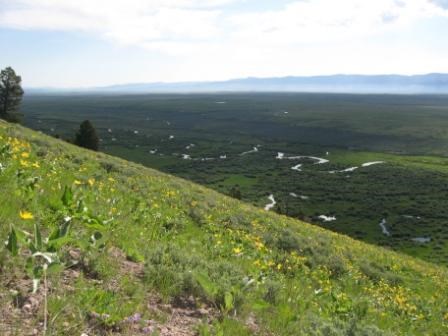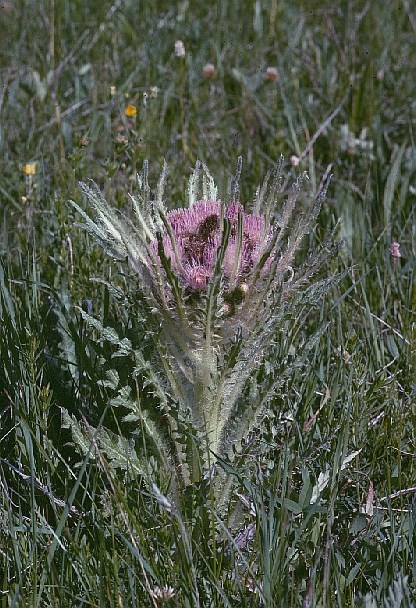
NPS photo Root foods and fish were the primary staples of the traditional Nez Perce diet. The “root foods” include all plants (usually hehen, “soft” herbaceous plants) with underground parts used for food: roots, bulbs, tubers, corms, and rhizomes. Nez Perce people enjoyed a great diversity of root food plants. Some neighboring groups had just a few kinds of root foods abundant in their home territories and relied on trade with the Nez Perce for roots that were unavailable. 
NPS photo The flowering of a root food plant (Lomatium canbyi) marked the beginning of spring in traditional Nez Perce society. Root foods were dug with the efficiently-designed digging stick, the tukus. The most important Nez Perce root foods in and around the Big Hole valley were kouse (Lomatium spp.), camas (Camassia quamash), and yampah (Perideridia gairdneri). By far, more kouse and camas were stored for winter use than any other plant foods. Lomatiums were the earliest source of fresh spring greens, and another spring vegetable included shoots of balsamroot (Balsamorhiza spp.). Bitterroot (Lewisia redeviva) and wapato were also favored roots and can still be found in the early summer on the open hillsides at Big Hole National Battlefield.
| ||||||||||||||||
Last updated: October 29, 2019
